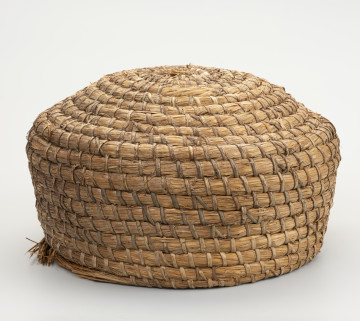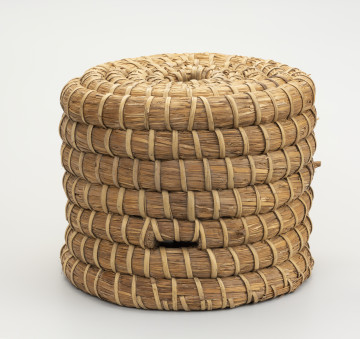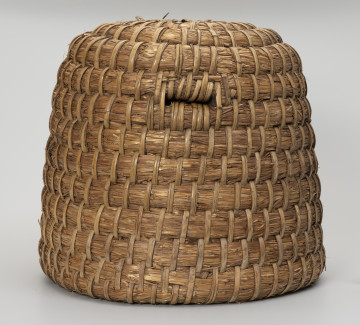
Skep (dome beehive)
1965
National Museum in Szczecin
Part of the collection: Beekeeping
Beekeeping is a craft that involves the breeding of bees and the extraction of honey, a valuable food product in terms of taste and nutritional properties. The predecessors of all beekeepers were the forest apiarists who set up beehives specially hollowed out of tree trunks, in the forests. Over time, they began to cut out sections of trunks with wild beehives and placed them near farms. They were called logs. At first, they were placed upright (log stands), later also in a horizontal position (log loungers). With the arrival of Dutch settlers in Pomerania at the turn of the 17th and 18th centuries, skeps, i.e. beehives of various sizes and shapes woven from straw braids, were introduced to the region. They soon came into widespread use. The typical feature of skeps was a lack of a base - they were placed on the ground which at the same time provided their closure. A hole was cut in the side wall of the skep for the bees to fly into. In the featured object, dating from around 1900, the rungs that provided support for the honeycombs have also been preserved. It is one of a dozen or so straw beehives in the ethnographic collection of the National Museum in Szczecin. Agnieszka Słowińska
Author / creator
Object type
beehive
Technique
coiling (weaving)
Material
straw, wood, bast
Origin / acquisition method
donation
Creation time / dating
Creation / finding place
Owner
Muzeum Narodowe w Szczecinie
Identification number
Location / status

1965
National Museum in Szczecin

1901 — 1920
National Museum in Szczecin

circa 1900
National Museum in Szczecin
DISCOVER this TOPIC
Castle Museum in Łańcut
DISCOVER this PATH
Educational path